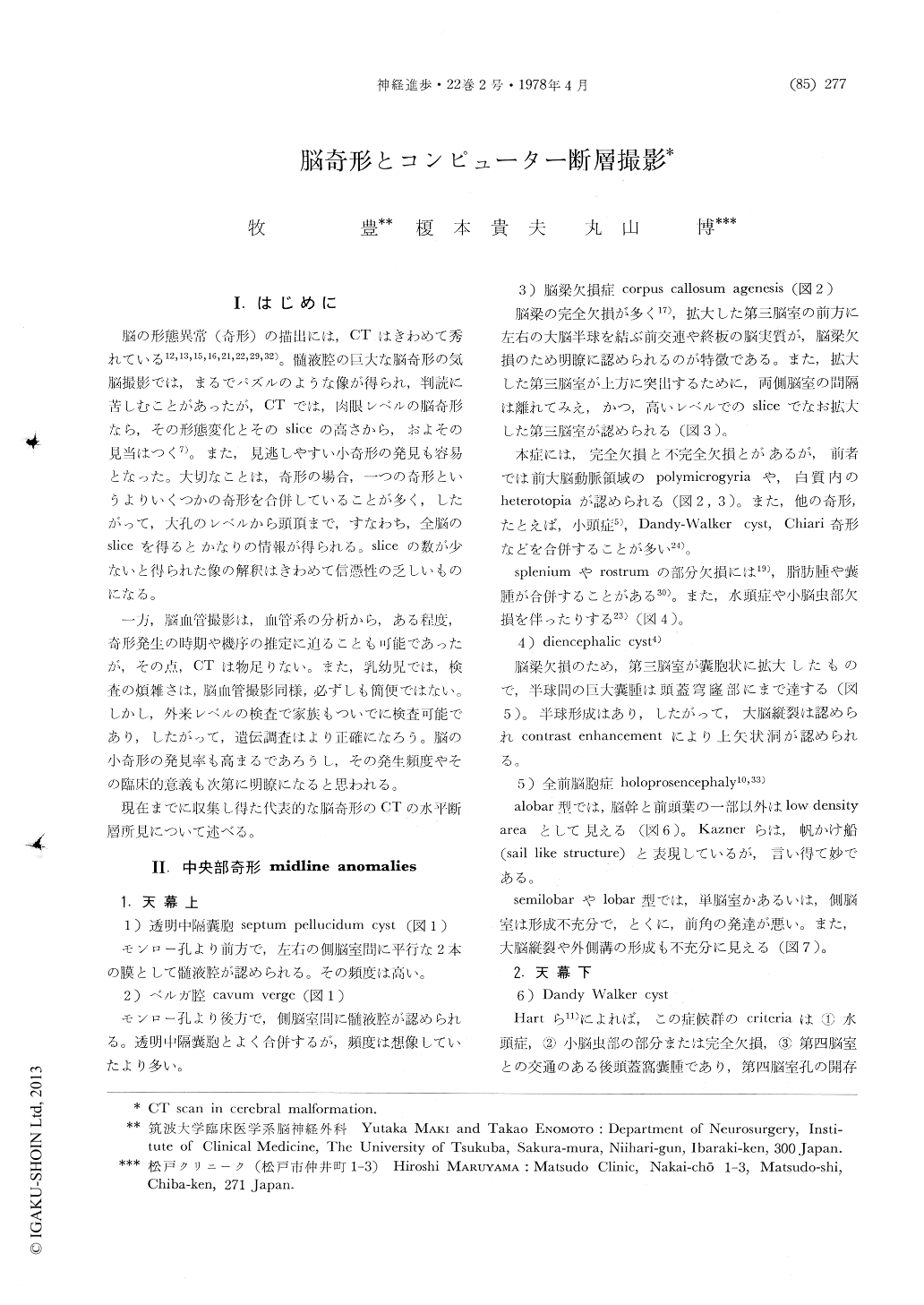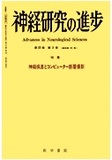Japanese
English
- 有料閲覧
- Abstract 文献概要
- 1ページ目 Look Inside
I.はじめに
脳の形態異常(奇形)の描出には,CTはきわめて秀れている12,13,15,16,21,22,29,32)。髄液腔の巨大な脳奇形の気脳撮影では,まるでパズルのような像が得られ,判読に苦しむことがあったが,CTでは,肉眼レベルの脳奇形なら,その形態変化とそのsliceの高さから,およその見当はつく7)。また,見逃しやすい小奇形の発見も容易となった。大切なことは,奇形の場合,一つの奇形というよりいくつかの奇形を合併していることが多く,したがって,大孔のレベルから頭頂まで,すなわち,全脳のsliceを得るとかなりの情報が得られる。sliceの数が少ないと得られた像の解釈はきわめて信憑性の乏しいものになる。
一方,脳血管撮影は,血管系の分析から,ある程度,奇形発生の時期や機序の推定に迫ることも可能であったが,その点,CTは物足りない。また,乳幼児では"検査の煩雑さは,脳血管撮影同様、必ずしも簡便ではない。しかし,外来レベルの検査で家族もついでに検査可能であり,したがって,遺伝調査はより正確になろう。脳の小奇形の発見率も高まるであろうし,その発生頻度やその臨床的意義も次第に明瞭になると思われる。
Abstract
CT with its ability to display brain anatomy and pathology with almost macroscopic accuracy, is the ideal diagnostic technique for evidence of congenital brain malformations. The resolution is enough to show even small cavity and atrophy of brain. But the study of cerebral anomalies by CT occurs often confusion, especially in the case with huge cavity or disorganized ventricular pattern. On the other hand, cerebral maforma-tion often combined with two or three other cerebral malformation. And so, complete succes-sively section from atlas level to cranium top are often needed.

Copyright © 1978, Igaku-Shoin Ltd. All rights reserved.


